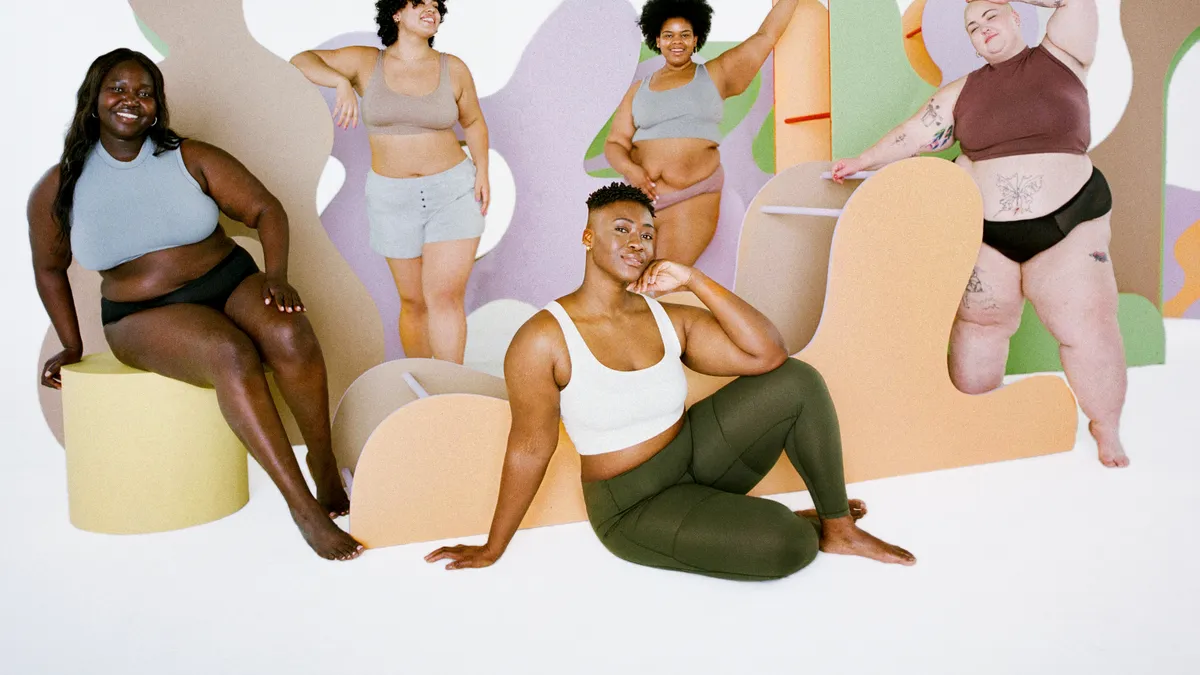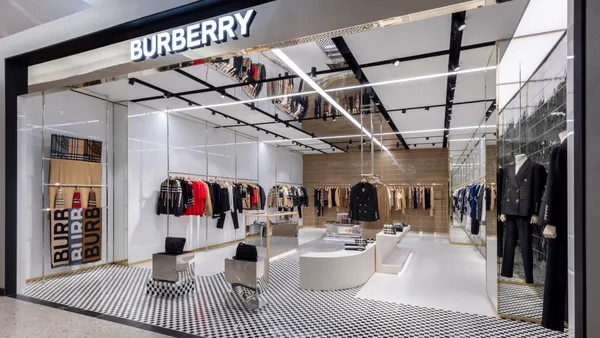It's a drag when underwear doesn't fit. With period underwear like Thinx, whose products are designed to work in lieu of traditional menstrual and bladder-leak protection, poor fit can be a disaster.
A couple of years ago, after Thinx introduced a line of "extended sizing" for plus customers, the company quickly learned that it hadn't done its homework. Problems with fit included inadequate coverage, which for many resulted in leaks.
"We heard it right away through our customer service group," CEO Maria Molland said by video call. "It was not the right fit across all the different parts of the underwear to ensure that it was really going to be a good customer experience. We did react to it quite quickly, but it's taken a while."
The company started over, turning to plus models and consumers for advice. Courtney Newman, who has deep experience with fit, including in plus sizes, was enlisted as director of product design in 2019.
"We decided to shift, and get rid of our extended sizes, given that they weren't really working," Newman said by video call. "People were just kind of hoping they would, crossing their fingers, and it wasn't happening."
It's happening now. The company began offering sizes XS through 4X across all its styles Tuesday.
The investment
Thinx isn't the first garment manufacturer to find out that creating designs beyond a narrow band of sizes involves expert pattern grading throughout the range. As Thinx also discovered, getting that right requires the investment of time and money, attention to detail and experienced designers.
"We got a plus-sized model and started refitting the entire range," Newman said. "And we started with the gusset because that's the most important part."
Demand has escalated for retailers to broaden their offer rather than ignore a major consumer base, but not all are attempting that or sticking with it when they do. Some, including Loft and M.M.LaFleur, abandoned the effort. Molland said that is not only unfair to a whole lot of people but also an unwise business move.
"We had to dedicate quite a few resources to be able to get this done properly. That said, I mean, it completely pays off," she said. "You have a slightly lower margin but not significantly, and you make that up through volume for sure. I've just been blown away at the size of the market opportunity. Seventy percent of women in the U.S. are over a size 14, and I find it fascinating that more businesses aren't doing this yet. Because not only is it the right thing to do, to be inclusive, but clearly it's a massive business opportunity."
The message
There is a message inherent in any apparel brand's range of available sizes. Newman said that Thinx is working to extend its range further. Meanwhile, the brand is adamant about charging the same amount for all its garments in a given line, regardless of size, Newman said.
But the overt messages when marketing to this customer are also fraught with what retail analytics firm Edited calls "toxic or passive-aggressive undertones." Researchers there recently found that the word "flattering" is used 22% more often to describe plus-size women's apparel, and "slimming" was used 19% more often, compared to the marketing of "straight" sizes.
Thinx decided to hand over the power, and the camera, to the consumers themselves for its marketing campaign. The brand hired Lydia Hudgens, a plus photographer and model, and recruited a diverse group of models, who gave input on how they would be seen, including taking some of their own photos.
"I really love the casting choice because I do feel like we're very used to seeing a stereotypical, hourglass version of plus, too," Hudgens said by video call. "Plus people come in a lot of different shapes. [Thinx has] done a really good job with highlighting different body types, but also with nonbinary and trans models. I think it's one of the most diverse castings that I've seen in a while, and I just think that's important. I wish I had seen this kind of imagery when I was a kid."















